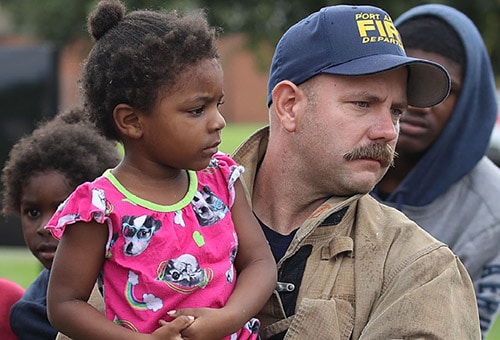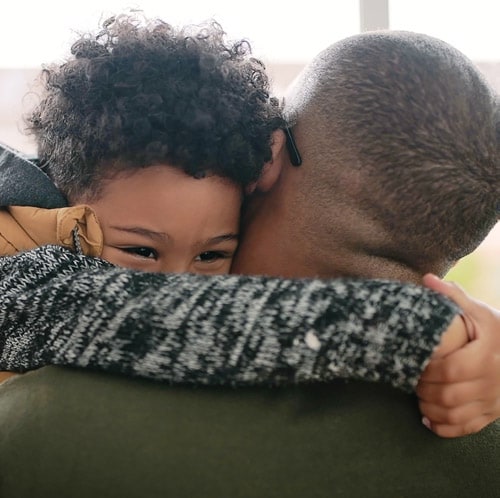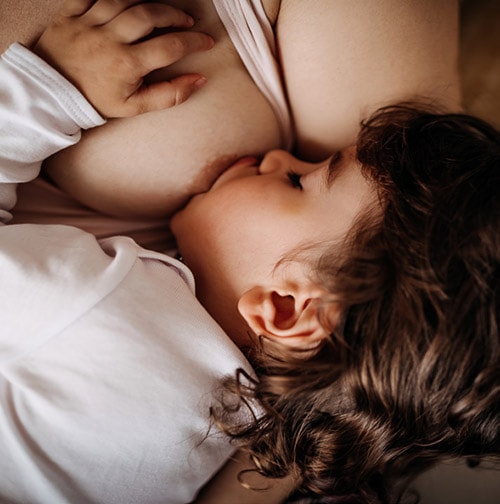Recovery

Disasters can be traumatizing for families. Emergency responders should be aware that individuals and communities may have experienced a variety of traumas in their lives and need to consider a survivor’s physical, psychological, and emotional safety and
well-being after a disaster.
- Take a trauma-informed approach to care during emergency response and recovery efforts.
- Teach families stress-reducing strategies.
- Provide information about caring for children in disasters.
- Connect people to mental health support services.
Continuity of Care
Continuity of care in breastfeeding support is achieved by consistent, collaborative, and seamless delivery of high-quality services for families from the prenatal period until no longer breastfeeding. Continuity of care results in transitions of care that are coordinated and fully supportive of families throughout their breastfeeding journey. Continuity of care is important to ensure that families continue to receive the support needed to feed their children safely.
- Assist families to connect with their health care providers and other social services to ensure their nutritional, physical, and mental health needs will be met during the recovery phase following an emergency.
- When breastfed infants do not have access to their mothers’ own milk, work to facilitate access to pasteurized donor human milk.
- If breastfeeding was disrupted, support families with relactation or resuming exclusive breastfeeding, and connect them to lactation support.
- If infants are dependent on infant formula, they will need infant formula, feeding supplies such as cups or bottles and nipples, and cleaning supplies through the recovery phase following a disaster.
Reunification

Reunification is the process of ensuring that children return to the care of their parent(s) and family as quickly as possible after an emergency. Most parents in the United States work outside the home and young children may attend childcare. Emergencies increase the possibility for children to become
separated from their parents or legal guardians. During the evacuation or sheltering process, parents may find that they are at work and their children are in childcare, school, a recreational facility, or other location. Keep children safe while they are separated from their families. In situations where children are separated from their usual caregivers, designate a trusted and trained person to act as a consistent substitute caregiver, particularly for young children. Keep siblings and friends together when possible.
- Learn more about creating a reunification plan [PDF-1.09MB].
Post-disaster assessment and surveillance

Identify post-disaster epidemiologic indicators for pregnant and postpartum women and their
infants and promote uniformity of measurement of disaster effects among this population to assist public health practitioners to identify post-disaster needs.
Select indicators and measures appropriate for the setting.
- Post-disaster Indicators for Pregnant and Postpartum Women and Infants [PDF-816KB]: This list includes common epidemiologic indicators for pregnant and postpartum women and infants who are affected by disasters and offers suggested measurement approaches. Learn about the process for developing post-disaster indicators:
- Sample Protocol for Using Post-Disaster Indicators [PDF-463KB] for Pregnant and Postpartum Women and Infants: Provides information on how post-disaster health indicators can be used when collecting supplemental information on pregnant and postpartum women
The Infant Feeding in Emergencies (IFE) Core Group’s Operational Guidance Document for Infant and Young Child Feeding (IYCF) in Disaster Emergencies [PDF-836KB] can be used as an additional resource to effectively organize and respond to emergencies. This document outlines emergency preparedness, response, and recovery worldwide, but can also be applied nationally.
County level breastfeeding initiation rates can be found on CDC’s website. These surveillance data can be used to plan for services and supplies that will be needed.
